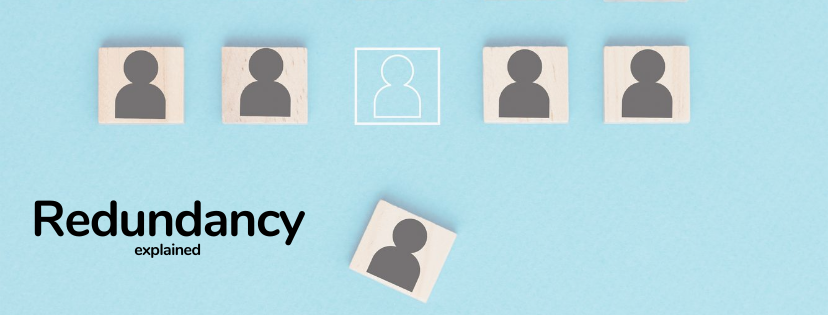Discussed: If a Company Goes Bust Who Pays Redundancy in the UK?
Discussed: If a Company Goes Bust Who Pays Redundancy in the UK?
Blog Article
Examining the Interplay In Between Company Redundancy and Business Versatility for Future Growth
In the dynamic landscape of today's organization globe, the elaborate partnership between company redundancy and organizational adaptability arises as a crucial element for continual development and success. Business frequently deal with the difficulty of striking a fragile balance in between keeping a degree of redundancy to minimize dangers and fostering versatility to react promptly to the ever-evolving market demands.
Value of Business Redundancy
Firm redundancy is a crucial element that improves organizational strength and minimizes functional dangers. By incorporating redundancy actions within the organizational framework, business can better withstand unpredicted disruptions and changes in business environment. Redundancy acts as a tactical buffer, allowing companies to adjust and respond efficiently to unexpected difficulties without jeopardizing important operations.
One key aspect of the value of firm redundancy is its role in guaranteeing connection throughout times of crisis. When encountered with abrupt changes or emergency situations, repetitive systems, sources, or personnel can step in to preserve crucial features and prevent extensive disruptions. This continuity not just safeguards the firm's credibility and client trust fund however additionally minimizes economic losses and operational downtime.

Techniques for Organizational Versatility

One more critical strategy is purchasing innovation and facilities that can sustain adaptability and scalability. Implementing digital tools, automation, and data analytics can enhance procedures, boost performance, and give valuable insights for informed decision-making. Moreover, creating adaptable organizational structures that permit quick adjustments to market dynamics and customer needs is important for staying competitive in a rapidly evolving environment. By proactively identifying potential disruptions and opportunities, organizations can proactively flourish and adapt in an ever-changing business landscape.
Balancing Redundancy and Adaptability
Accomplishing a harmonious equilibrium between functional redundancy and business versatility is paramount in navigating the intricacies of a dynamic service setting. Striking the best equilibrium in between redundancy and adaptability is a delicate Read More Here procedure that calls for a deep understanding of the organization's goals, market characteristics, and risk tolerance.
To achieve this balance, companies need to carry out routine evaluations of their operations to determine areas where redundancy is needed for danger mitigation and where versatility can drive advancement and growth. Carrying out versatile structures, promoting a culture of continuous learning and improvement, and encouraging open interaction throughout all degrees of the organization are key strategies to integrate redundancy and flexibility properly. By lining up these two vital aspects, companies can place themselves for lasting growth and success in an ever-changing business landscape.
Study on Adjustment Success
In taking a look at instances of successful business adjustment, it becomes evident that the interaction in between operational redundancy and flexibility is a specifying element in shaping resistant services. One compelling instance research study is that of Netflix. Initially a DVD rental solution, Netflix demonstrated remarkable flexibility by transitioning into a streaming system when digitalization interrupted the industry. By purposefully buying modern technology and material creation, Netflix not just thrived however survived in a swiftly developing market. An additional standout example is Amazon. Beginning as an online book shop, Amazon continuously adjusted its business design, expanding right into diverse markets such as cloud computing and expert system. This versatility permitted Amazon to stay in advance of rivals and satisfy transforming consumer needs. Last but not least, Adobe supplies a significant illustration of effective adaptation. The business changed from selling software application licenses to a subscription-based version, guaranteeing persisting revenue streams and improved consumer engagement. These situation researches underscore her latest blog the relevance of functional redundancy coupled with business flexibility in fostering long-lasting development and competitiveness.
Building Durability for Future Growth
Building durability for future development needs a calculated placement of operational processes with market characteristics and emerging patterns. Companies should adapt to altering environments by fostering a society of adaptability, technology, and continual enhancement. Durability involves not just getting better from obstacles however also proactively preparing for future obstacles. One key facet of structure durability is purchasing durable danger management strategies to minimize prospective disruptions. This consists of situation planning, expanding supply chains, and establishing contingency strategies for click here to read different contingencies (who pays redundancy money).
Furthermore, cultivating strong partnerships with stakeholders, such as clients, staff members, providers, and the area, is necessary for maintaining and weathering unpredictabilities trust and support throughout turbulent times. Efficient interaction and transparency play a crucial role in building strength, as they help help with and straighten expectations partnership in browsing unpredictabilities.
Furthermore, organizations require to focus on learning and advancement campaigns to upskill staff members and equip them with the required devices to adjust to changing situations. By investing in their labor force, firms can enhance their adaptability and agility, eventually reinforcing their resilience for sustainable future development.
Verdict

In the dynamic landscape of today's organization world, the complex relationship in between company redundancy and organizational adaptability emerges as a crucial aspect for continual growth and success. Firms typically face the difficulty of striking a fragile balance in between maintaining a level of redundancy to alleviate threats and promoting flexibility to respond promptly to the ever-evolving market needs.To achieve this equilibrium, firms require to carry out normal assessments of their operations to determine locations where redundancy is necessary for danger mitigation and where flexibility can drive development and development.In verdict, the interaction between company redundancy and business flexibility is crucial for future growth. Building durability via a combination of redundancy and adaptability will make sure that firms are prepared for the challenges of the future.
Report this page